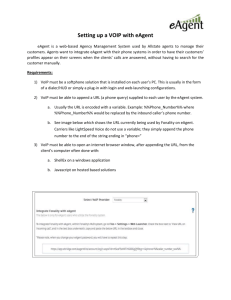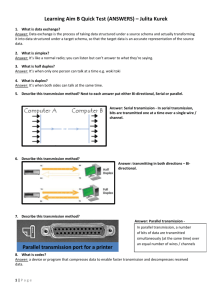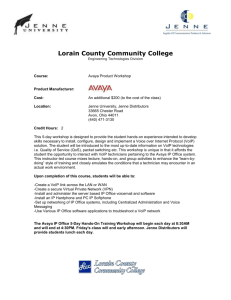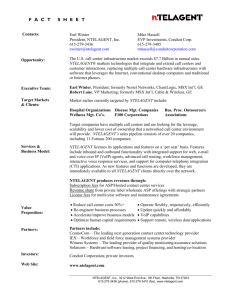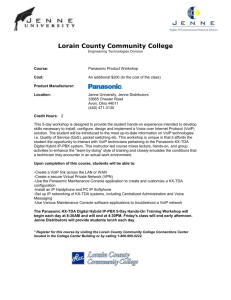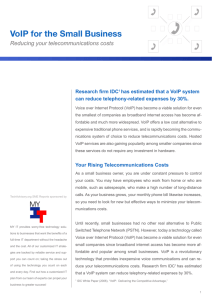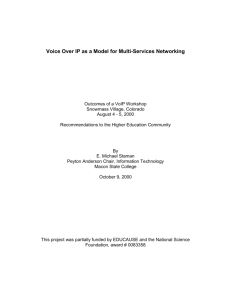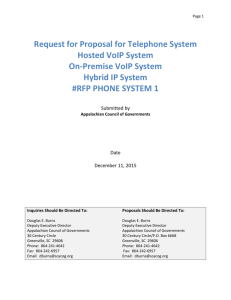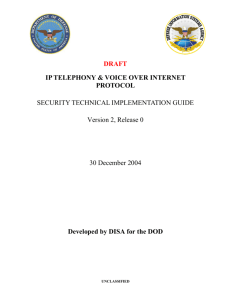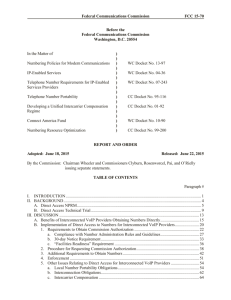Telephone/VoIP
advertisement
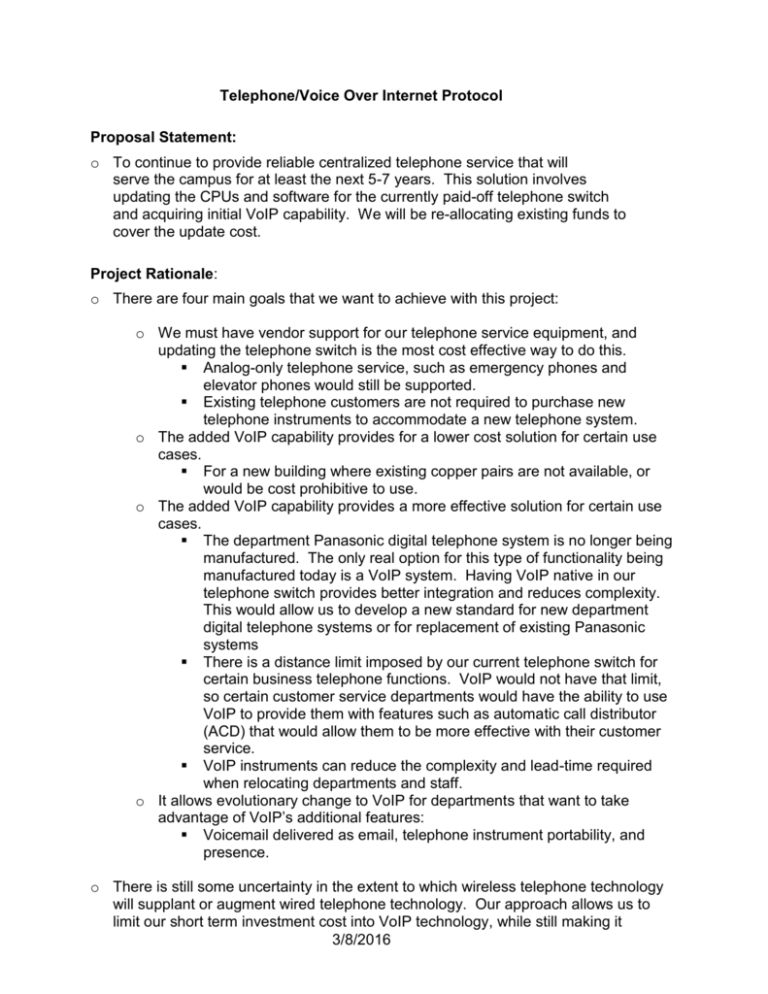
Telephone/Voice Over Internet Protocol Proposal Statement: o To continue to provide reliable centralized telephone service that will serve the campus for at least the next 5-7 years. This solution involves updating the CPUs and software for the currently paid-off telephone switch and acquiring initial VoIP capability. We will be re-allocating existing funds to cover the update cost. Project Rationale: o There are four main goals that we want to achieve with this project: o We must have vendor support for our telephone service equipment, and updating the telephone switch is the most cost effective way to do this. Analog-only telephone service, such as emergency phones and elevator phones would still be supported. Existing telephone customers are not required to purchase new telephone instruments to accommodate a new telephone system. o The added VoIP capability provides for a lower cost solution for certain use cases. For a new building where existing copper pairs are not available, or would be cost prohibitive to use. o The added VoIP capability provides a more effective solution for certain use cases. The department Panasonic digital telephone system is no longer being manufactured. The only real option for this type of functionality being manufactured today is a VoIP system. Having VoIP native in our telephone switch provides better integration and reduces complexity. This would allow us to develop a new standard for new department digital telephone systems or for replacement of existing Panasonic systems There is a distance limit imposed by our current telephone switch for certain business telephone functions. VoIP would not have that limit, so certain customer service departments would have the ability to use VoIP to provide them with features such as automatic call distributor (ACD) that would allow them to be more effective with their customer service. VoIP instruments can reduce the complexity and lead-time required when relocating departments and staff. o It allows evolutionary change to VoIP for departments that want to take advantage of VoIP’s additional features: Voicemail delivered as email, telephone instrument portability, and presence. o There is still some uncertainty in the extent to which wireless telephone technology will supplant or augment wired telephone technology. Our approach allows us to limit our short term investment cost into VoIP technology, while still making it 3/8/2016 available in the instances where it is the more cost-effective solution, or where it provides the best business telephone functionality. Project Aim & Outcomes: o Provide a current and maintainable telephone system, supporting campus’s existing investment in telephone equipment. o Provide the capability to implement VoIP where it provides required features, or is the most cost effective solution. Implementation Roadmap: o Submit purchase order to vendor - Completed. o Finalize contract details for maintaining maintenance coverage until the update is complete – In Process. o Determine Statement of Work for update – Completed. o Coordinate service outages with campus – Specific dates, times, and durations are still being finalized but none are expected to be very long in duration or overly disruptive. o Perform update – Tentative schedule is for the not-too-early morning of Saturday, August 27th, 2011. o Modify backend systems to interface with new switch software – In progress, no immediate show stoppers. o Begin implementation of in-house VoIP functions – this sub-project cannot commence until we have fully accepted the telephone switch update, but we expect to have this in process by 12/31/2011. Resources: o The final cost for the update is $298,000 including tax. We will be reallocating existing funds to cover this cost. o Existing Communications Services Staffing Scheduling: o Updating the telephone switch requires Communications Services to minimize the amount of change activity to the switch for several weeks, and will also cause a brief interruption of telephone service. Therefore this work should be scheduled for Summer 2011, avoiding peak activity periods. We are in the process of preparing for an anticipated cut over date of 8/27/2011. Dependencies: o There is some minor power work that will need to get through Physical Facilities. 3/8/2016 o Wider deployment of VoIP to departments will necessitate increased cooperation and coordination between OIT/Communications Services and departmental network support personnel. Risks: o Our vendor, NEC, has responded that the disaster in Japan will not affect any of the project goals. o It is anticipated that budget cuts may cause departments to continue to disconnect telephone lines. The biggest risk is that, because there is a fixed cost base, a diminishing customer base could eventually result in a higher cost per customer. This is, however, a situation which may be encountered even without the proposed project. 3/8/2016
